Example Use Case
A Software Development Process Example
The Copy & Link Power-Up can improve visibility of progress between different teams.
In this example, we look at one way to use Trello and the Copy & Link Power-Up to manage a software development life-cycle that caters to both a Product Manager and a Development Team.
The high-level process involves a Product Roadmap board and a Development Sprint board. The Product board contains all the features the product manager would like completed in upcoming versions of the software. As each feature is prioritised and scheduled for development, the card is copied into the Development board and tracked through the sprint process, ultimately ending in a release to production.
With the Copy & Link Power-Up, the Product Manager can see where every feature is currently sitting in the Development process, as aligned with the Product Roadmap. The Product Manager has an instant reference of the tasks moving through the Development Sprint.
Step 1 - Create a Product Roadmap board, with columns Backlog, Prioritised, and Completed. Fill the Backlog column with features that require development.

Step 2 - Create a Development Sprint board, with columns To Do, Doing, Testing, and Released

Step 3 - Link the Product board to the Development board with the Copy & Link Power-Up.
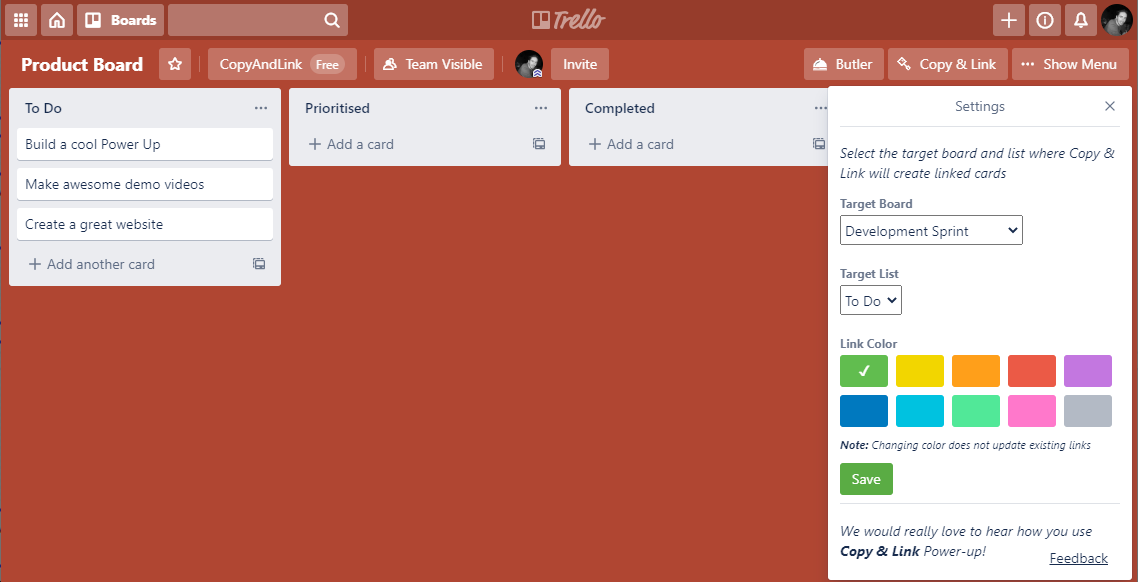
Step 4 - The Product Manager and the Development Team meet once a week to discuss the development priorities. In this meeting the group decides on the work for next sprint and put each feature into the Prioritised column. Each prioritised feature is then “copy and linked” into the Development board.
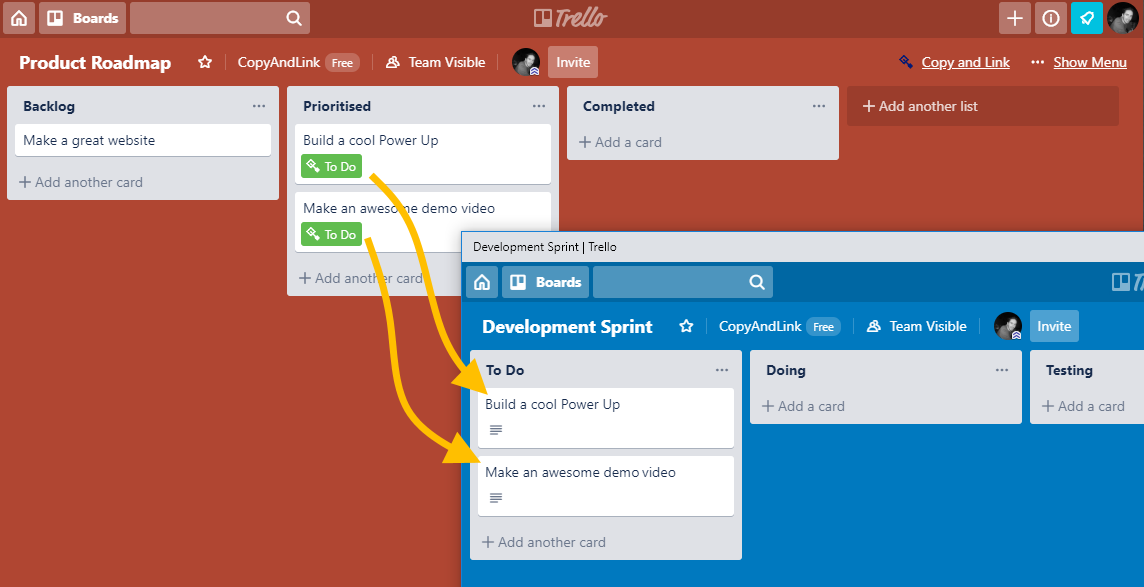
Step 5 - The Development Team assign the tasks and move them across the Development board as they progress. Throughout the sprint the Product Manager has an up-to-date view of where every feature is currently sitting.
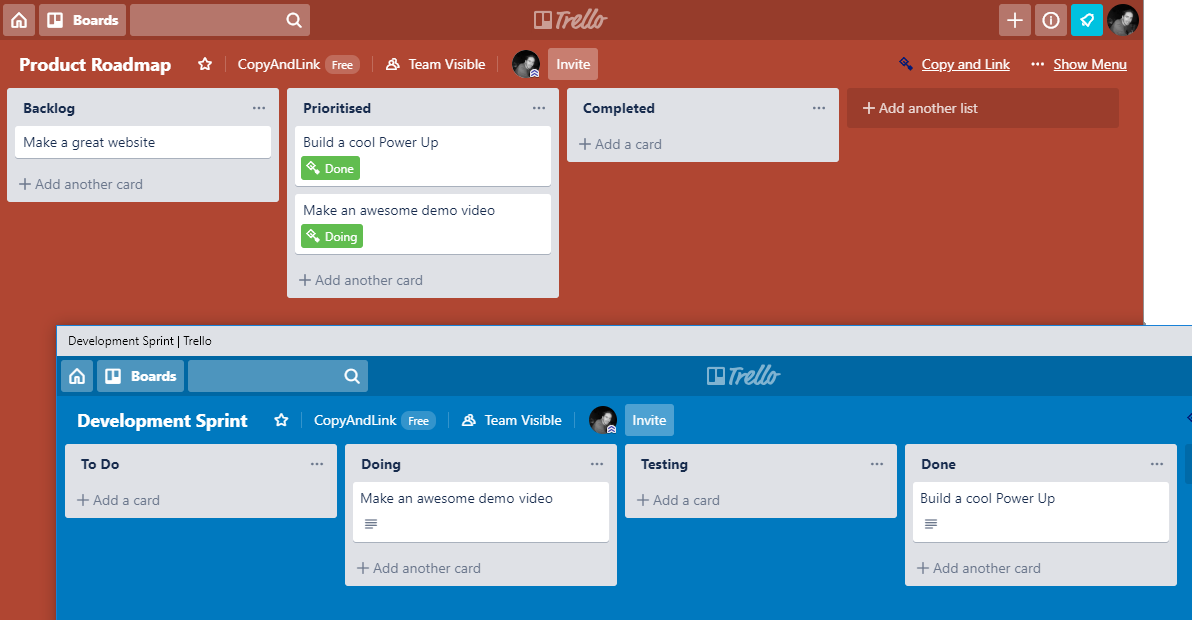
For finer grade visibility use checklists in the development task. The badges on the Product board will indicate the number of tasks completed. Once all tasks are completed the indicator will be removed.
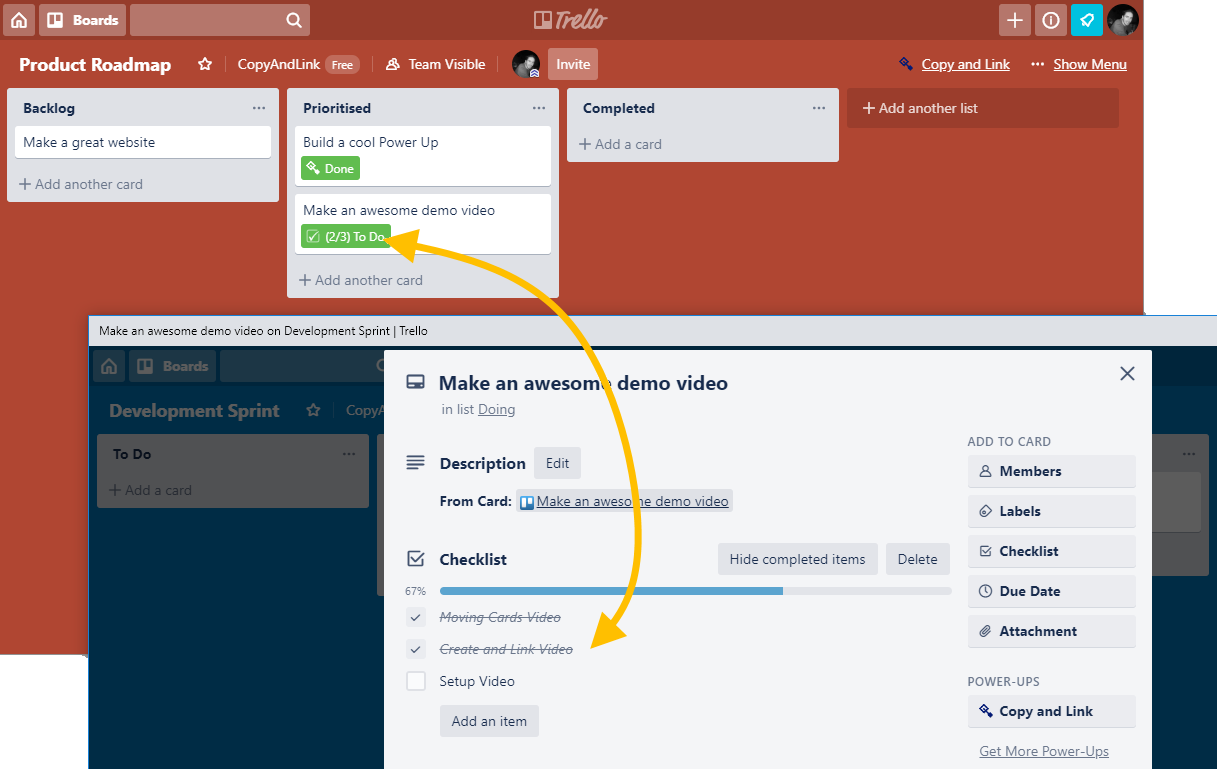
Step 6 - Once a feature is shipped, the Developer can rename the column to indicate the release date. In this example the completed cards for the sprint have been moved to the Released board. Now satisfied with completion of each feature the Product Manager can update the Product Roadmap accordingly, and has a historic view of when each feature was shipped into production.
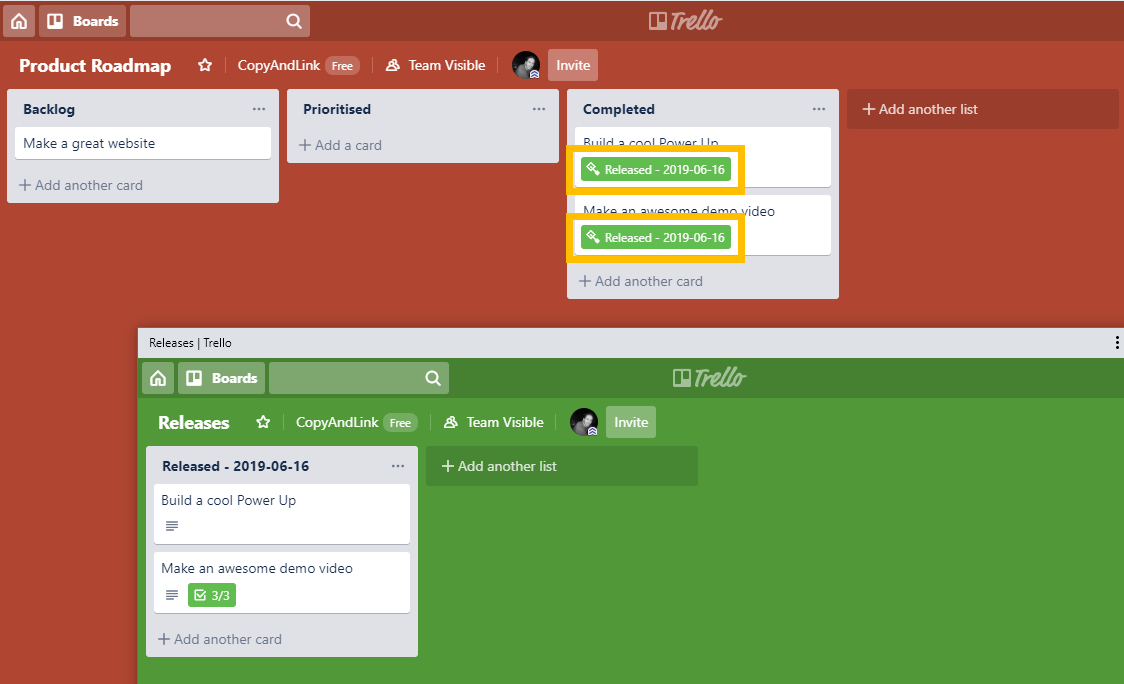
Bonus 1 - Expand this process for multiple Product Managers to feed into a single Development pipeline. Developers often need to accommodate multiple parties, but keeping each party informed on their respective features can be challenging. With the Copy & Link Power-Up, each Product Manager has an automatic view into their own feature requests.
Bonus 2 - A similar arrangement can be used to track support requests into the development pipeline. Simply setup Trello to create support requests from email, have a triage officer review each request and if development is required they can easily “copy and link” a bug fix card into the Development board.